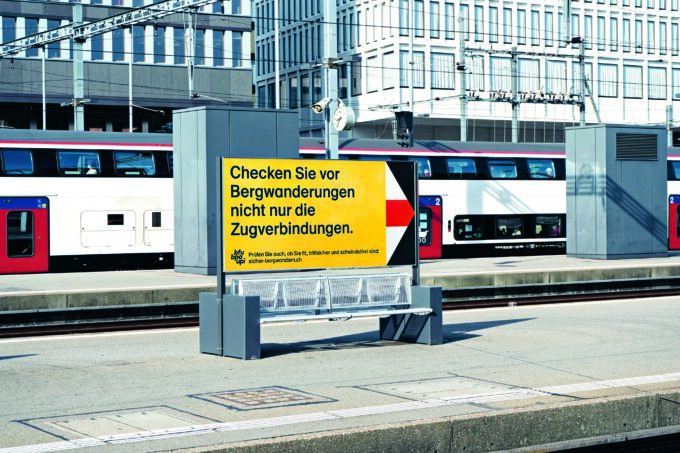Mountain hiking: dangerous overconfidence
Almost three out of five people in Switzerland hike regularly. The downside: the number of accidents tends to rise. Overestimating oneself is one of the main causes of accidents, according to the BFU. A self-test for the dangers of mountain hiking.

Mountain hiking is the most popular sport in Switzerland. 58 percent of the population hikes on Swiss hiking trails for around 20 days a year, and the trend is rising. Unfortunately, according to the Swiss Council for Accident Prevention (BFU), the number of accidents is also increasing. According to current BFU estimates, 37,000 people have accidents while hiking in the mountains every year. In about 5,000 cases, the injuries are severe or moderate, and 42 accidents are fatal.
Many people are not aware that a mountain hike is not just a walk, the accident advice center stresses. Anyone who wants to hike on white-red-white marked mountain trails must be fit, surefooted and free from vertigo. Various BFU studies have shown that many people do not prepare themselves sufficiently for a mountain hike.
Importance of signposts hardly known
Nearly half of the population does not know the meaning of white-red-white points on the signposts, according to BFU. 26 percent of those surveyed who were on a mountain hiking trail also said they were only moderately prepared or not prepared at all, the organization continues. 18 percent said they were not particularly surefooted.
On the basis of these investigations, the BFU - together with the Association of Swiss Hiking Trails as a specialist partner - is focusing on the white-red-white signposts in the new mountain hiking campaign. The posters would be seen mainly in public transport areas and would encourage hikers to consider not only their departure times and connections, but also whether the planned mountain hike was suitable for their own abilities.
Self test available online
Hikers also have the possibility to walk on the Campaign website a Self-test to do. This consists of questions about fitness and surefootedness, among other things; in addition, there are practical exercises to check one's own assessment. The result of the self-test shows whether the requirements for a mountain hike are met or whether a yellow-marked hiking trail is the better choice.
Source: AAIB
The most important tips for safe mountain hiking
Prepare carefully: Consider the difficulty of the route (trail category), physical demands, time requirements, abilities of the hikers, trail conditions and weather. If you are hiking alone, inform a third person.
Equip yourself properly: sturdy hiking boots with a non-slip tread, warm and weatherproof clothing, sun protection, map, provisions, emergency first-aid kit and cell phone are always on hand.
Stay alert: Take regular breaks, drink and eat. Keep an eye on the schedule, weather, trail conditions and the condition of the hiking group. If in doubt, turn back in time or choose an alternative route. (AAIB)









